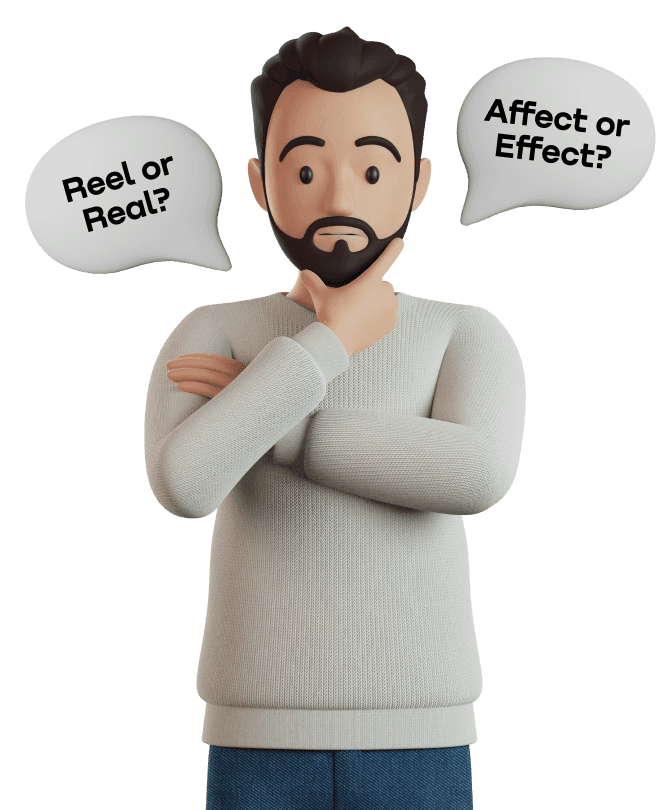With vs Along With
What’s the difference between them?

With
Meaning:
with is a preposition used to indicate the person or thing that an action is done to, or with which something is associated.
Examples:
1. With a heavy heart, she said goodbye to her family.
2. With great difficulty, he managed to finish the marathon.
3. With the recent drop in temperatures, it's time to bundle up.
Along With
Meaning:
along with means together with or in addition to.
Examples:
1. I need to bring a few snacks along with me to the party.
2. Along with the new car, I also purchased a navigation system.
3. She is taking painting classes along with music lessons.
Learn similar and opposite words to spot the difference
Synonyms
Antonyms
With
1. Along
2. Together
3. In concert
4. In combination
5. In association
1. Against
2. Without
3. Opposite
4. Separate
5. Contrary
Along With
1. As well as
2. Jointly with
3. Together with
4. Accompanied by
5. In addition to
1. Separate From
2. Apart From
3. Unaccompanied By
4. Alone
5. Independently
Tricks for mastery
Useful tips to understand the difference between confusing words "With", "Along With".

1. Remember that with is a preposition that can be used to describe the action of someone or something being done to another person or thing.
2. Along with indicates that two or more things are happening, or being done, together.
3. To remember the difference between 'with' and 'along with', note that the latter contains the word 'along', which implies both are happening at the same time.
Practice English with the Promova app and avoid misusing confusing words
Frequently asked questions
In what situations should the first word 'with' be used?
With is used to indicate the person or thing that an action is done to, or with which something is associated. It is commonly used to show the relationship between two entities, a person and an object, or a verb and a noun. For example, 'She sang with passion,' or 'She cooked dinner with her family.'
When is the appropriate context for using the second word 'Along With'?
Along with is used to indicate the accompaniment of two or more entities, or to emphasize that something is included. It connotes that two or more entities are in the same place at the same time, and are involved in the same activity. For example, 'I'm going to the beach along with my friends,' or 'We need to buy some food along with the supplies.'
Do the two words share the same pronunciation?
No, the two words have different pronunciations. With is pronounced with a short 'I' sound (/wɪð/) while along with is pronounced with a long 'I' sound (/əˈlɔːŋ wɪð/).
What are some common mistakes people make when using these words?
One mistake is using the two terms interchangeably. While with is used to indicate the person or thing that an action is done to, along with implies that two or more entities are involved in the same activity. Additionally, some people incorrectly use the phrase 'alone with' instead of 'along with'. This is incorrect as 'alone with' connotes being by oneself with someone else.
Fill in the gaps to check yourself
1. She decided to bring her dog __________ her on the hiking trip.
2. John, __________ his friends, is planning a surprise party for his sister.
3. He enjoys playing soccer __________ his brother in the park.
4. Maria, __________ her sister, is known for her artistic talent.
5. The chef prepared a delicious three-course meal __________ dessert.
6. __________ her busy schedule, she still finds time to volunteer at the local shelter.
1. She decided to bring her dog with her on the hiking trip.
Explanation: In this sentence, with is used to indicate the person or thing that an action is done to, in this case, bringing the dog on the hiking trip.
2. John, along with his friends, is planning a surprise party for his sister.
Explanation: Along with is used to mean together with or in addition to, indicating that John and his friends are planning the surprise party together.
3. He enjoys playing soccer with his brother in the park.
Explanation: Here, with indicates that the action of playing soccer is done with his brother.
4. Maria, along with her sister, is known for her artistic talent.
Explanation: Along with is used to mean together with or in addition to, indicating that Maria and her sister share the reputation for artistic talent.
5. The chef prepared a delicious three-course meal with dessert.
Explanation: With is used to indicate that the three-course meal includes dessert as part of it.
6. Despite her busy schedule, she still finds time to volunteer at the local shelter.
Explanation: In this sentence, both with and along with can be used interchangeably to indicate that she volunteers despite her busy schedule. Despite is also an acceptable choice.
Get a gift by subscribing to our newsletter!
Download the PDF with a list of commonly confused words made as flashcards for comfortable learning.
List of Commonly Confused Words
Finding your way around the English language can be hard, especially since there are so many confusing words and rules. So, a list of the most confusing words in English is an extremely useful tool for improving language accuracy and sharing the ideas clearly.